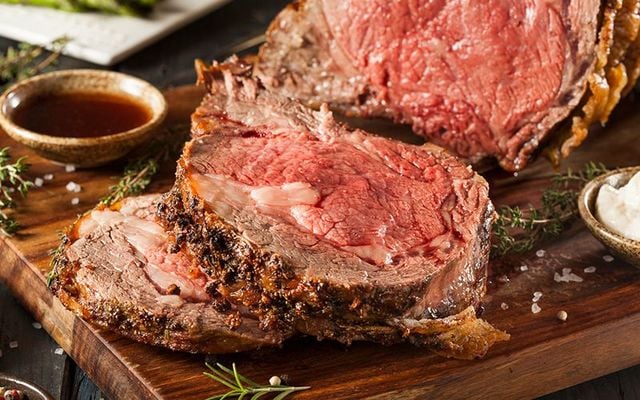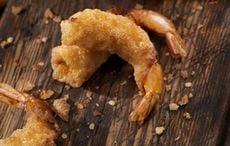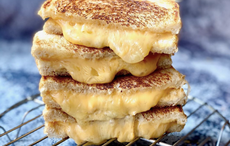Sunday would not be the same without a good Irish roast! Here's a traditional Sunday roast recipe from Chef Michael Gilligan.
This is the simplest of meals, so it is shocking how many times I’ve been looking forward to a great Sunday roast only to have it resemble shoe leather. Making the perfect roast beef is easy with these handy tips for perfect roast beef.
Choosing the Beef
The best joints for roast beef are a Rib of Beef, Sirloin or Fillet. Rib - better even, Prime Rib - works well, as it will be cooked on the bone. Keeping the bone in makes for a tastier piece of beef when cooked but both Sirloin and Fillet are very good.
The beef should be:
Dark in color - meaning it has been hung well and mature, a thick covering of fat that adds flavor and prevents the joint from drying out during cooking.
Marbled. Marbling is small slivers of fat running through the flesh. Again this adds flavor and prevents drying out during cooking.
How Much to Buy
5 ½ lb bone in will feed 6
3 lb boned will feed 6
Don't worry about buying too much. Cold roast beef makes great sandwiches or can be added to a plate of cold cuts.
Cooking Temperature
There are varying opinions about what the perfect temperature to cook roast beef, but in my experience starting the beef in a very hot oven of 425F for the first 30 minutes and then lowering the temperature to 375F for the remaining cooking time works best
How Long
How long to cook beef depends on your preference for how 'pink' (or not) you like to eat beef.
Calculate it this way: Rare 11 minutes per lb; medium 14 minutes per lb; and well done 16 minutes per lb.
How to Cook
The beef should be at room temperature. Stand the beef joint in a roasting tin then cook to the temperature and time as above.
Rest, Rest, Rest
An important part of cooking any meat is once it is removed from the oven the meat must rest. Wrap the meat loosely in aluminum foil and put to one side. The fibers in meat tighten up during cooking and resting allows the fibers to relax, release some of the meat juices (great for the gravy) and results in a soft tender piece of meat. 20 minutes should be long enough, but up to an hour won't do any harm. The joint is then ready to carve.
Yorkshire pudding recipe
This Yorkshire pudding recipe is simple and guarantees success. A tray of Yorkshire puddings fresh from the oven should be well-risen, golden brown with a crisp exterior and soft middle.
Ingredients:
- 4 large, fresh eggs, measured in a jug
- Equal quantity of milk to eggs
- Equal quantity of all-purpose/plain flour to eggs
- Pinch of salt
- 2 tbsp lard, beef dripping or vegetable oil
Method:
Serves 6
- Heat the oven to the highest temperature possible, however, do not exceed 450F/ or the fat may burn.
- Pour the eggs and milk into a large mixing bowl and add the pinch of salt. Whisk thoroughly with an electric beater or hand whisk. Leave to stand for 10 minutes.
- Gradually sieve the same volume of flour (as the eggs) into the milk and egg mixture, again using an electric beater or hand-whisk to create a lump-free batter resembling thick cream, if there are any lumps pass the batter through a fine sieve.
- Leave the batter to rest in the kitchen for a minimum of 30 minutes, longer if possible - up to several hours.
- Place a pea-sized piece of lard, dripping or ½ tsp vegetable oil in a Yorkshire pudding tin (4 x 2"/5 cm hole tin) or 12-hole muffin tin and heat in the oven until the fat is smoking. Give the batter another good whisk adding 2 tbsps of cold water fill a third of each section of the tin with batter and return quickly to the oven.
- Leave to cook until golden brown approx 20 minutes. Repeat the last step again until all the batter is used up.
* Originally published in 2013, updated in 2024.




Comments